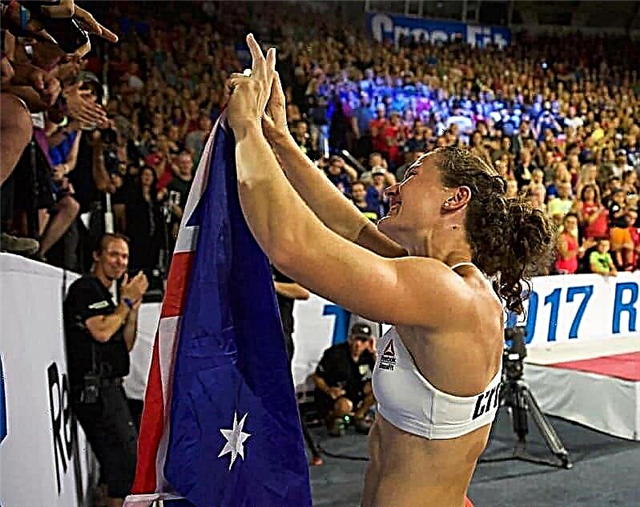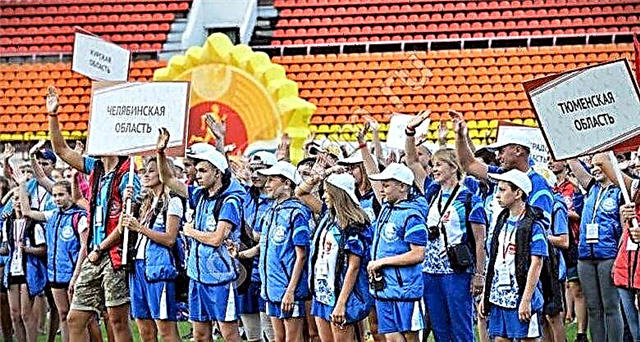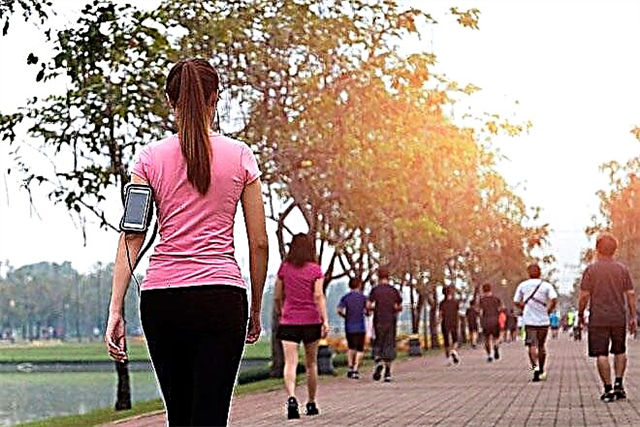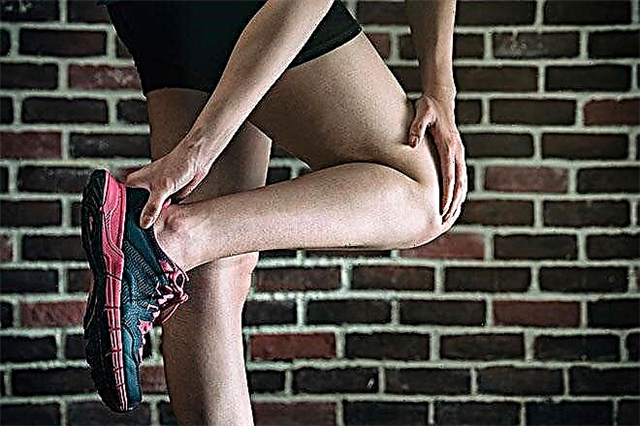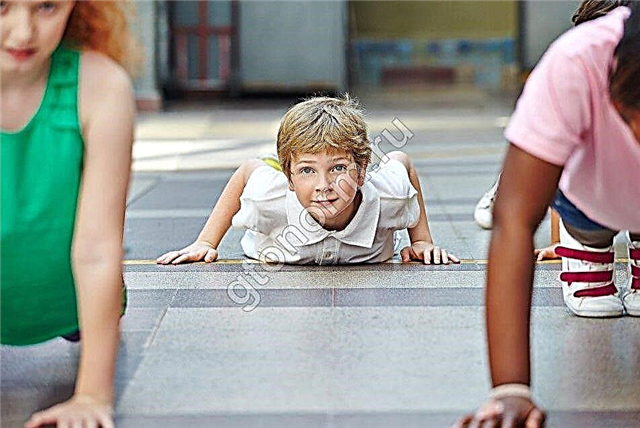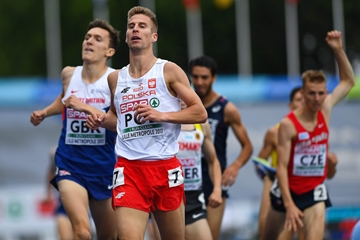Split is an exercise aimed at stretching muscles and ligaments, it consists in spreading the legs in opposite directions, while they form a single line. Good stretching gives the body freedom and relieves stiffness.
Gymnastics distinguishes only two types of this figure - longitudinal and transverse. The rest of the known subspecies are their variations.
Twine and half-twine
The twine figure has the following characteristics:
- Legs spread apart form a single line.
- Correctly executed, the angle between the legs is 180 degrees.
- The pelvic part is slightly turned forward.

© Vitaly Sova - stock.adobe.com
There is such a thing as half-step. The bent leg takes over the support, and the other leg is retracted to the side or back and fully extended.

© fizkes - stock.adobe.com
Half twine is used in warm-up before direct stretching.
Transverse and longitudinal
In total, there are two types of twine - longitudinal and transverse. In the first case, one leg is in front of the body, and the other is behind, the legs are perpendicular or at an acute angle to the body. It can be left- and right-sided, depending on the leg that is in front.

© F8studio - stock.adobe.com
When transverse, the legs are spread apart to an angle of 180 degrees or more. In this case, they are located on the sides, in contrast to the longitudinal one.

© Nadezhda - stock.adobe.com
Scientists claim that the side splits are easier for men than for women. This is due to the structure of the female body, fast and painless stretching prevents the tone of the adductor muscles. On the contrary, it is more difficult for men to perform a longitudinal split. The structural features of the muscles of the back of the thigh and their strength seriously interfere with easy stretching.
In addition, due to the peculiarities of the structure of muscles and joints, 13% of people will never be able to boast of such an ability.
Possible variations
There are many variations of the two forms of twine. There are seven subspecies of this gymnastic element.
Classical
It is the extension of the legs to a position in which the angle between the inner surfaces of the thighs is 180 degrees, in accordance with the above characteristics.
Performed on a flat surface or floor:

© khosrork - stock.adobe.com
Negative (sagging)
One of the most difficult types of twine. To complete it, you will have to acquire additional equipment, for example, chairs or a Swedish wall.
The main characteristic of this species is the angle between the hips in excess of 180 degrees.
This exercise requires high concentration and good muscle tone, as well as constant self-improvement. It is not available to everyone.

© zhagunov_a - stock.adobe.com
Horizontal
It consists in raising the legs along the horizon. It is a classic twine, usually performed on the floor. Hands are usually held strictly in front of you or spread apart.

© Sergey Khamidulin - stock.adobe.com
Vertical
It differs from the previous position of the legs in space - in this case, they are located perpendicular to the horizon. While standing, a person leans on one of the legs, and lifts the other into the air. A pylon or a Swedish wall is often used as a support.
Vertical longitudinal twine:

© Prostock-studio - stock.adobe.com
Transverse modification is done without fail with hands rest:

On hands
For this option, the athlete must have unique skills in balance and control of his own body. Standing in a handstand, the person slowly spreads his legs to the sides:

© fizkes - stock.adobe.com
Option with a longitudinal twine on the arms:

© master1305 - stock.adobe.com
Another variation is the forearm stand:

© sheikoevgeniya - stock.adobe.com
Air
It is done in the air, more often in a jump, but some know how to perform this element while standing still. By jumping up and swinging his legs, the person reaches the desired angle of rotation in the air.
It is noteworthy that not all air twine craftsmen are able to perform the classical one.

© Andrey Burmakin - stock.adobe.com
Lying on the floor
The main condition is to rest your back on a flat surface. From the initial lying position on the floor, a person spreads his legs to the sides, receiving a transverse split:

© sonsedskaya - stock.adobe.com
To perform the longitudinal one, one leg is laid on the floor, and the other is pulled to the head, supporting with hands:

© Аrtranq - stock.adobe.com
Royal twine
The royal twine is considered the height of skill in gymnastics. The famous actor Jean-Claude Van Damme demonstrated this element in a commercial for the Volvo car company.
The main difference with this type is the use of supports for two feet. In this case, the body remains suspended. The performance of the element requires not only absolute flexibility, strength and elasticity of ligaments and muscles, but also muscular statistical strength.
Daily training, the ability to control your own body, as well as the breathing of yogis will help you perform the royal split. The breath trick, when inhaling and exhaling through the larynx, effectively warms up the body.

© marinafrost - stock.adobe.com
How do the splits?
A huge plus for the body will bring daily or regular stretching exercises, especially for women.
The benefits of such exercises have long been proven:
- muscle tone support;
- improvement of joint mobility;
- acceleration of blood flow in the pelvic organs;
- increased muscle elasticity.
Exercise will help strengthen the body and reduce the risk of sprains and injuries.
Experts say that with age, muscle elasticity decreases and it is much more difficult to do splits after 30 or 40 years than in childhood or adolescence. To a greater extent, this axiom is true, but this does not mean at all that it is impossible to sit on the split after 40. Persistence and regular exercise will help you achieve your desired goal.
The timing of stretching and execution of the gymnastic element under consideration is rather difficult to determine. It all depends on the individual characteristics of the organism and a number of reasons:
- the ability to stretch;
- age category;
- articular flexibility;
- training frequency and conditions.
With regular and diligent exercise, a person can stretch quite quickly, but this is unlikely to happen in a week or even a month. Provided, of course, that he had never done stretching before. A couple of months for people under the age of 45 seems like a realistic timeframe with the right and well-chosen exercises.
Just trying to do the split every day is not the most literate thing, it is better to approach it gradually, starting with warm-up and preparatory exercises. When the stretch improves, you can try to complete the figure.
An improper twine preparation program can cause irreparable harm to the body and impair elasticity.
Proper stretching rules:
- do it regularly (exercises will not take more than 15 minutes, so you should do them daily or every other day);
- engage in a warm room (the air temperature in the room should be at least 20 ° C, in a cold room the muscles become less elastic, which can lead to injuries);
- be careful (do not rush, during fast exercises there is a high risk of injury, for example, sprains);
- do not rush and work hard trying to achieve quick results, this is fraught with serious injuries.
It is best if a person also finds companions who go towards a similar goal.
Watch some helpful videos on teaching twine:
Contraindications
Stretching exercises place a high strain on the body.
Before starting training, you should carefully assess the possibilities and risks, as well as compare the list of contraindications with the characteristics of your own body:
- injured spine;
- hypertension;
- inflammatory processes in the hip joints;
- disorders in the work of the musculoskeletal system;
- fractures, cracks and other defects in joint tissues and bones.
Even in the absence of contraindications, it is necessary to take classes seriously, all actions should be performed in a measured manner in order to eliminate the risk of injury. For this, it is very important to do a warm-up correctly, to prepare joints and muscles for the upcoming stress.
It is important to monitor your own feelings and perform exercises in accordance with the recommendations of competent trainers.


